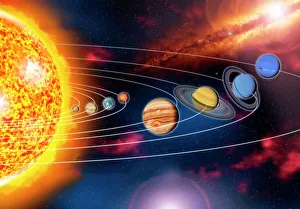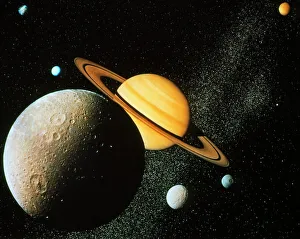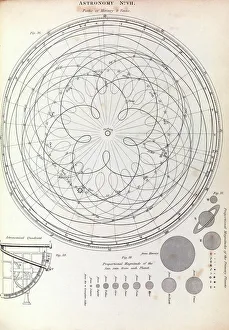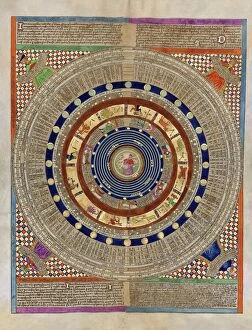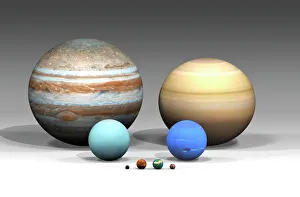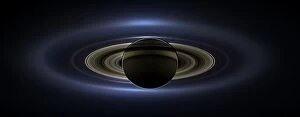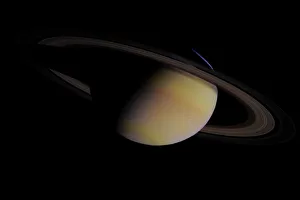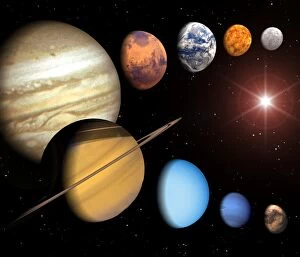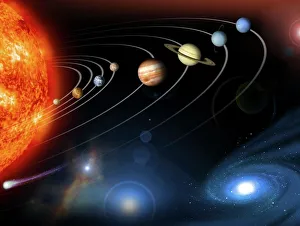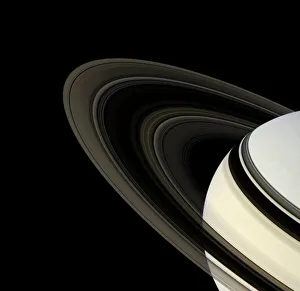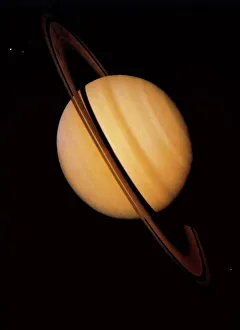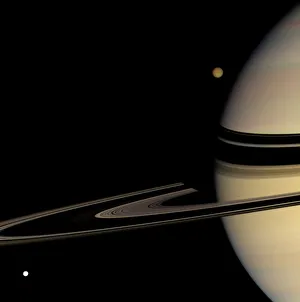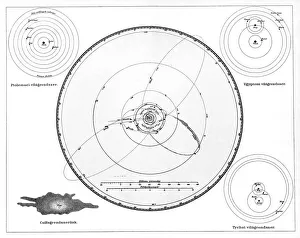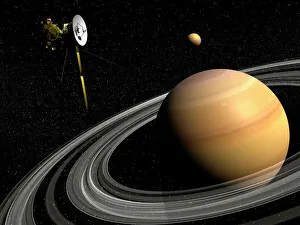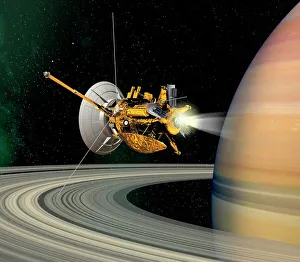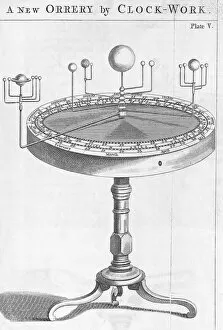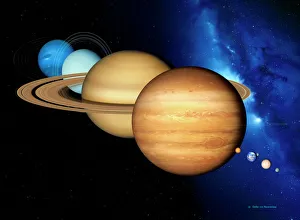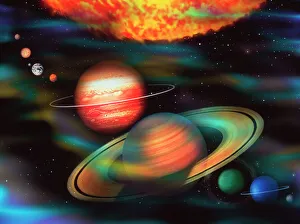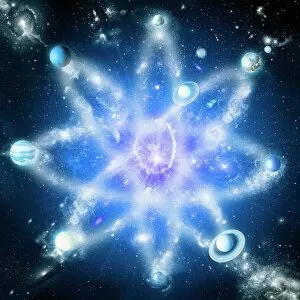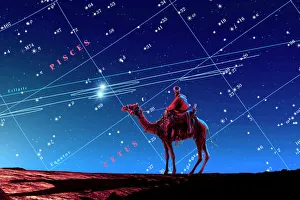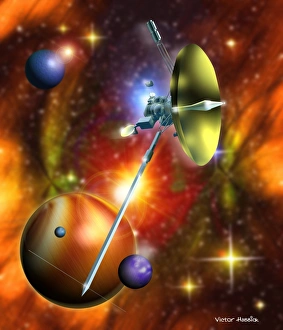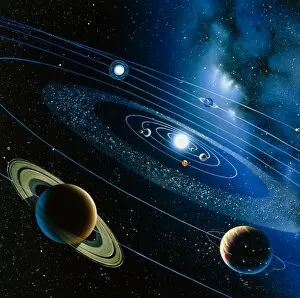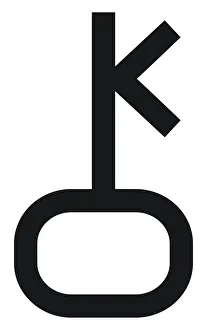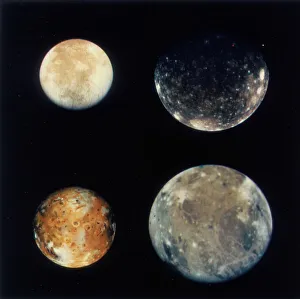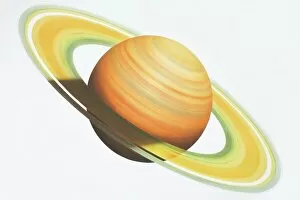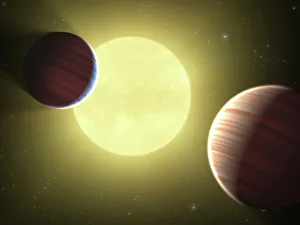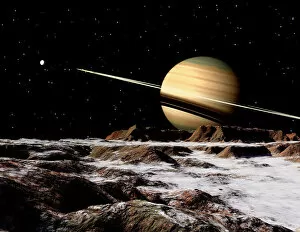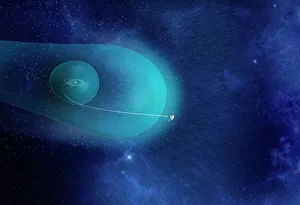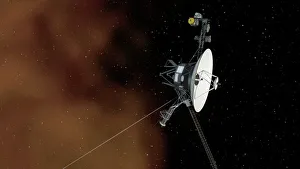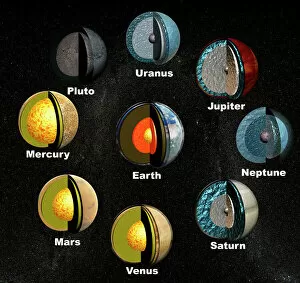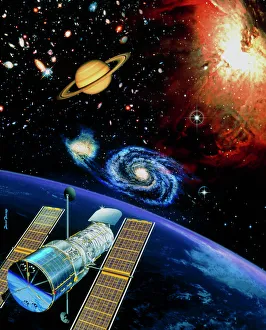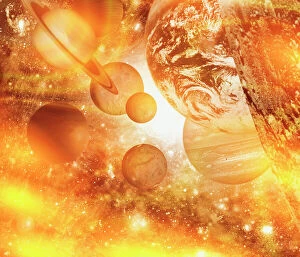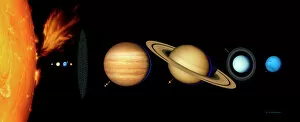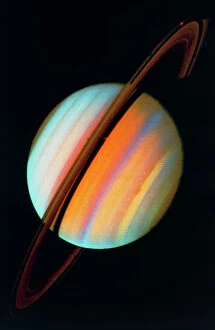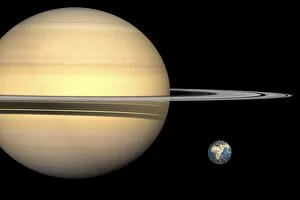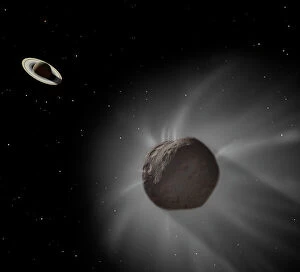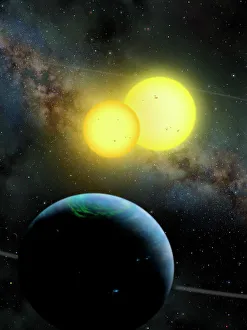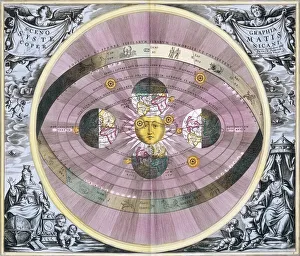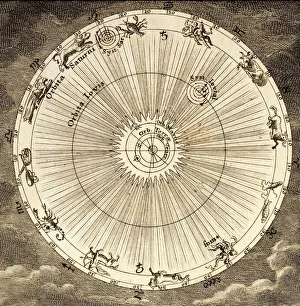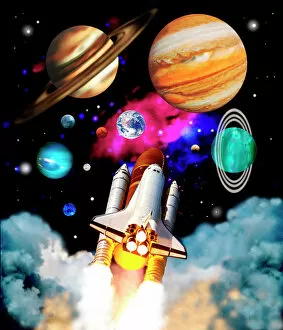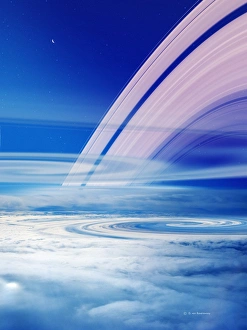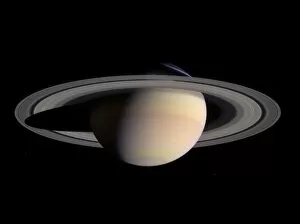Saturn Collection
Saturn is the sixth planet from the sun and the second largest in our solar system and has a unique and beautiful ring system composed of icy particles, dust
Choose a picture from our Saturn Collection for your Wall Art and Photo Gifts
706 items
All Professionally Made to Order for Quick Shipping
-
Saturn Collection
Saturn is the sixth planet from the sun and the second largest in our solar system and has a unique and beautiful ring system composed of icy particles, dust, and rocks that encircle its equator. Saturn is made up mostly of hydrogen and helium gas, with a rocky core at its center. Its atmosphere contains ammonia ice clouds which give it a yellowish hue. Saturn has 62 known moons, including Titan which is larger than Mercury. The Cassini spacecraft was launched in 1997 to explore Saturn's rings and moons; it sent back incredible images of this majestic planet before eventually crashing into its atmosphere in 2017. Saturn's most notable feature are its rings which are believed to be formed by particles that were once part of one or more moons that were destroyed by collisions with other objects in space.
+
Our beautiful pictures are available as Framed Prints, Photos, Wall Art and Photo Gifts
The Saturn collection from Media Storehouse offers a wide range of products featuring stunning images of the sixth planet from the sun. Our collection includes wall art, framed prints, photo prints, canvas prints, jigsaw puzzles and greeting cards that are perfect for space enthusiasts or anyone who appreciates breathtaking imagery. The high-quality photographs capture the beauty and mystery of Saturn's rings and moons in incredible detail. From close-up shots of the planet's swirling clouds to panoramic views of its rings stretching out into space, there is something for everyone in this collection. Whether you're looking to decorate your home or office with striking artwork or want to send a unique greeting card to a friend, our Saturn collection has you covered. With so many options available, it's easy to find the perfect piece that captures your love for space exploration and science.
+
What are Saturn (Planets Space Exploration Science) art prints?
Saturn art prints are a collection of high-quality, visually stunning images of the planet Saturn and its surrounding moons. These prints showcase the beauty and complexity of Saturn's rings, as well as its unique atmosphere and weather patterns. They are perfect for anyone interested in space exploration or science, or simply looking to add a touch of otherworldly beauty to their home or office decor. These art prints are created using state-of-the-art printing technology that ensures vibrant colors and sharp details. They come in a variety of sizes to suit any space, from small desk frames to large wall hangings. Whether you're an astronomy enthusiast or just appreciate beautiful artwork, these Saturn art prints are sure to impress. We offer a wide selection of Saturn art prints from top photographers and artists around the world. Each print is carefully curated for quality and style, ensuring that you receive only the best products available on the market today.
+
What Saturn (Planets Space Exploration Science) art prints can I buy from Media Storehouse?
We offer a wide range of Saturn art prints that are perfect for space enthusiasts and lovers of astronomy. These prints showcase the beauty and wonder of Saturn, with stunning images captured by NASA's Cassini spacecraft. Some popular options include close-up shots of Saturn's rings, featuring intricate details and patterns that are truly mesmerizing. Other prints highlight the planet's unique features, such as its hexagonal storm at the north pole or its many moons. Whether you're looking for a striking piece to hang in your home or office, or simply want to add to your collection of space-themed artwork, we have something for everyone. With high-quality printing on a variety of materials, including canvas and fine art paper, these prints are sure to impress. So why not explore our selection today and discover the wonders of Saturn?
+
How do I buy Saturn (Planets Space Exploration Science) art prints?
To purchase Saturn art prints from Media Storehouse, you can browse our extensive collection of high-quality images featuring the planet. Once you have found a print that catches your eye, simply add it to your cart and proceed to checkout. You will be prompted to enter your shipping and payment information before finalizing the order. We offer a variety of sizes and formats for their prints, including framed options for easy display. They use only the highest quality materials in their printing process to ensure that each piece is vibrant and long-lasting. Whether you are looking for a stunning addition to your home decor or a unique gift for an astronomy enthusiast, we have something for everyone. With our easy-to-use website and reliable customer service team, buying Saturn art prints has never been easier.
+
How much do Saturn (Planets Space Exploration Science) art prints cost?
The cost of Saturn art prints from Media Storehouse varies depending on the size and type of print selected. The company offers a range of options, including framed or unframed prints, canvas prints, and posters. You can choose from a variety of sizes to suit their needs and budget. Saturn is one of the most popular subjects for space-themed artwork due to its striking appearance and unique features such as its rings. As a result, there are many different styles and designs available to choose from. Media Storehouse is known for offering high-quality prints that are suitable for display in homes, offices, or other settings. Their selection includes both classic images as well as more contemporary interpretations of Saturn's beauty. You can expect to find a wide range of prices when shopping for Saturn art prints at Media Storehouse depending on their preferences and budget.
+
How will my Saturn (Planets Space Exploration Science) art prints be delivered to me?
Your Saturn art prints from Media Storehouse will be delivered to you with the utmost care and attention. Our team takes pride in ensuring that your artwork arrives in pristine condition, ready for display. We use high-quality packaging materials to protect your prints during transit, including sturdy cardboard tubes or flat envelopes depending on the size of the print. Each package is carefully sealed and labelled with your delivery address. Once your order has been dispatched, you will receive a confirmation email containing tracking information so that you can follow its progress until it reaches your doorstep. We understand how important it is for our customers to receive their orders promptly and securely. That's why we work hard to provide a reliable delivery service that meets all of our customers' needs.

